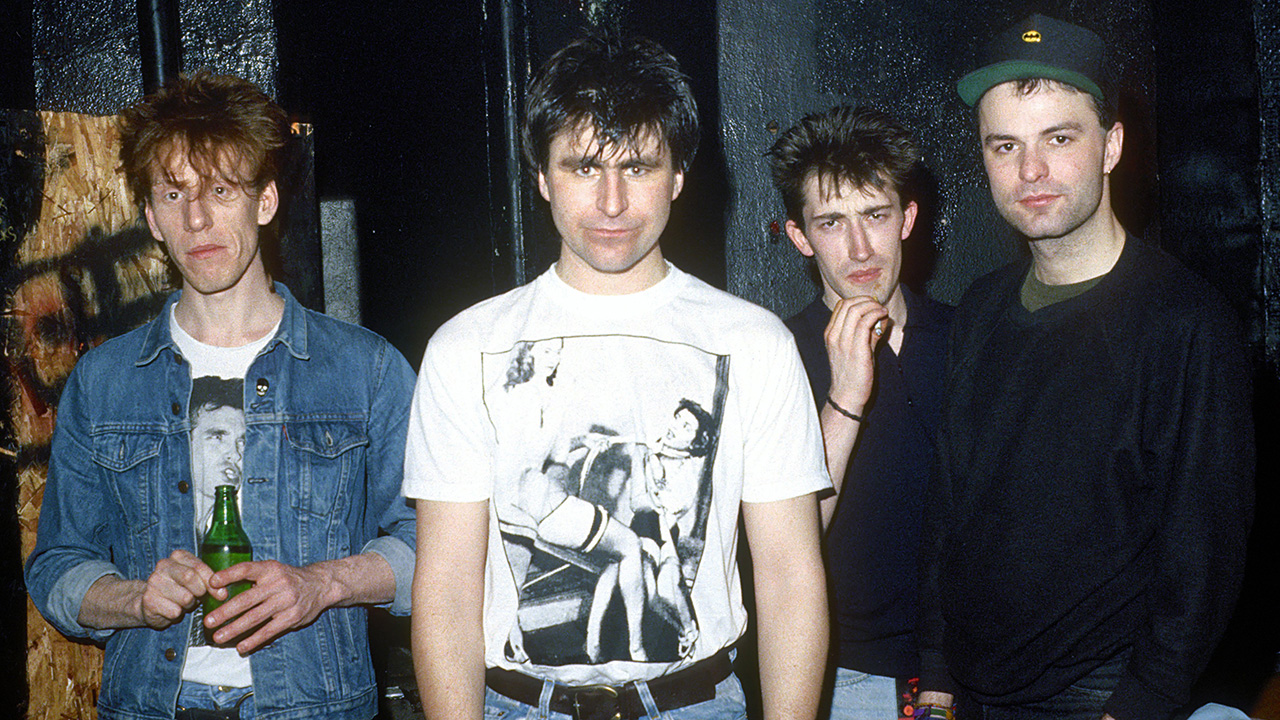“An op-art Blue Meanie with doves for ears and a planet for an eye? It’s more Marillion than Smiths”: The new wave band who dabbled with prog and inspired The Pineapple Thief, Oceansize and others
With hints of Pink Floyd, The Mission and Killing Joke, this Manchester group defied expectations with their second album in 1985

In 2020 Prog argued that The Chameleons' second album, 1985’s What Does Anything Mean? Basically, sat firmly in the progressive genre - and inspired the likes of Oceansize,
If punk was more than just the cries of the disaffected working class, the same was true of its further-educated successor, post-punk. Right up to the mid-80s a savvy proletariat supplied beautiful noises to a socially aware pop audience – and Manchester’s Chameleons were one such band taking gritty urban soundscapes beyond the barricades.
Formed in 1981, they peppered their early output with rain-stained, mind-altering moments. View From A Hill, which appears on their debut album Script From A Bridge is a tab-induced signpost. By the time we reach second long-player What Does Anything Mean? Basically, the trip is in full flow.
Just a glimpse at the artwork and you know you’ve arrived somewhere brilliantly alien: an op-art Blue Meanie with doves for ears and a planet for an eye is more Marillion than Meat Is Murder. Nevertheless, the Chameleons were still viewed as edgy, post-punk visionaries with hard-bitten polemic and a lot of chiming, transcendental key-work in the mix.
What Does Anything Mean? Basically opens with the sublime Silence, The Sea And Sky, a meditative Solina-wrought instrumental that gives way to the paisley skip of Perfume Garden. Meeting at an intersection of Magazine and The Mission, mutual fans could delight in the reverb maze constructed by Mark Burgess, Dave Fielding, Reg Smithies, John Lever and Andy Clegg here, cleverly masking their Thatcher-era oppression-pop as the gentrified angst of Floyd.
And so it continues: the Smithsian whirl of Intrigue In Tangiers (inspired by Burgess’ visits to a retired servicemen’s club, where a hash-fuelled, wheelchair-bound gent would recall exotic missions); Return Of The Roughnecks with its acerbic yuppie baiting and Killing Joke-tough chops; and Singing Rule Britannia, the stately call-to-arms against the regime that was turning the UK upside down (‘And now the baby needs to grow/But the mother is crazy’– spiralling to a paranoid, embittered She Said, She Said crescendo).
Finally we reach the glorious centrepiece, Home Is Where The Heart Is. Inspired by The Prisoner, a dreamy but eerie melody is woven around an idea of destiny and the Devil, fading to a throbbing wash of keys as PS Goodbye closes the album with a three-stanza love letter to the band’s inspirations.
Sign up below to get the latest from Prog, plus exclusive special offers, direct to your inbox!
There would be one last release, Strange Times, recorded when The Chameleons signed to Geffen – allegedly mistaken for The Stone Roses – before they proceeded to fall apart musically and emotionally. The sounds they made, however, are surely cornerstones for Porcupine Tree, Anathema, Oceansize and their ilk.
Here’s to their crazy nights, crazy sights and the bearing of scars that only their mothers knew.
Jo is a journalist, podcaster, event host and music industry lecturer who joined Kerrang! in 1999 and then the dark side – Prog – a decade later as Deputy Editor. Jo's had tea with Robert Fripp, touched Ian Anderson's favourite flute (!) and asked Suzi Quatro what one wears under a leather catsuit. Jo is now Associate Editor of Prog, and a regular contributor to Classic Rock. She continues to spread the experimental and psychedelic music-based word amid unsuspecting students at BIMM Institute London and can be occasionally heard polluting the BBC Radio airwaves as a pop and rock pundit. Steven Wilson still owes her £3, which he borrowed to pay for parking before a King Crimson show in Aylesbury.
You must confirm your public display name before commenting
Please logout and then login again, you will then be prompted to enter your display name.


